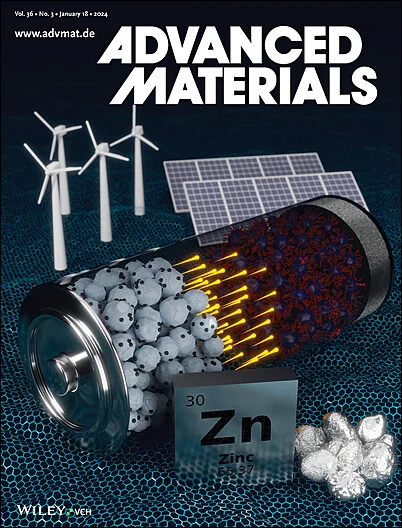Scalable Production of 24‐Hour‐Long Afterglow Plastics Through Molecular Doping Strategy
IF 26.8
1区 材料科学
Q1 CHEMISTRY, MULTIDISCIPLINARY
引用次数: 0
Abstract
The development of polymeric afterglow materials has garnered significant interest due to their promising applications in sensing technologies, smart devices, and optoelectronic systems. However, conventional engineering plastics typically exhibit limited afterglow properties owing to rapid nonradiative decay processes under ambient conditions. This study presents a breakthrough in the fabrication of plastics with 24‐h‐long afterglow (HLA) properties through a molecular doping strategy compatible with industrial engineering processes. By utilizing aromatic plastics as electron acceptor and the matrix, spirofluorene derivatives are incorporated as electron donors and chromophore dopants via a melt blending technique, a widely established method in polymer manufacturing. The resulting doped plastics demonstrated green afterglow persisting for 24 h under ambient conditions. At 4 °C, the HLA lasted for up to 100 h after ceasing photoexcitation, setting a new benchmark for polymeric materials. Remarkably, these materials could be activated by natural sunlight and maintain a visible green afterglow for 5 h in ambient air. Mechanism studies revealed that the HLA phenomenon is associated with the formation of donor/acceptor exciplexes upon photoexcitation. Additionally, the HLA plastics exhibited exceptional mechanical flexibility and optical transparency, making them highly suitable for advanced applications in flexible displays and next‐generation wearable technologies.通过分子掺杂策略可扩展生产24小时长余辉塑料
由于聚合物余辉材料在传感技术、智能设备和光电子系统中的应用前景广阔,其发展引起了人们的极大兴趣。然而,由于在环境条件下快速的非辐射衰变过程,传统工程塑料通常表现出有限的余辉性能。本研究通过与工业工程工艺相兼容的分子掺杂策略,在制造具有24小时余辉(HLA)性能的塑料方面取得了突破性进展。利用芳香族塑料作为电子受体和基体,通过熔融共混技术将螺芴衍生物作为电子给体和发色团掺杂剂。所得到的掺杂塑料在环境条件下表现出持续24小时的绿色余辉。在4°C下,停止光激发后HLA持续长达100 h,为聚合物材料设定了新的基准。值得注意的是,这些材料可以被自然阳光激活,并在环境空气中保持5小时可见的绿色余辉。机制研究表明,HLA现象与光激发下供体/受体杂合体的形成有关。此外,HLA塑料表现出卓越的机械灵活性和光学透明度,使其非常适合柔性显示器和下一代可穿戴技术的先进应用。
本文章由计算机程序翻译,如有差异,请以英文原文为准。
求助全文
约1分钟内获得全文
求助全文
来源期刊

Advanced Materials
工程技术-材料科学:综合
CiteScore
43.00
自引率
4.10%
发文量
2182
审稿时长
2 months
期刊介绍:
Advanced Materials, one of the world's most prestigious journals and the foundation of the Advanced portfolio, is the home of choice for best-in-class materials science for more than 30 years. Following this fast-growing and interdisciplinary field, we are considering and publishing the most important discoveries on any and all materials from materials scientists, chemists, physicists, engineers as well as health and life scientists and bringing you the latest results and trends in modern materials-related research every week.
 求助内容:
求助内容: 应助结果提醒方式:
应助结果提醒方式:


